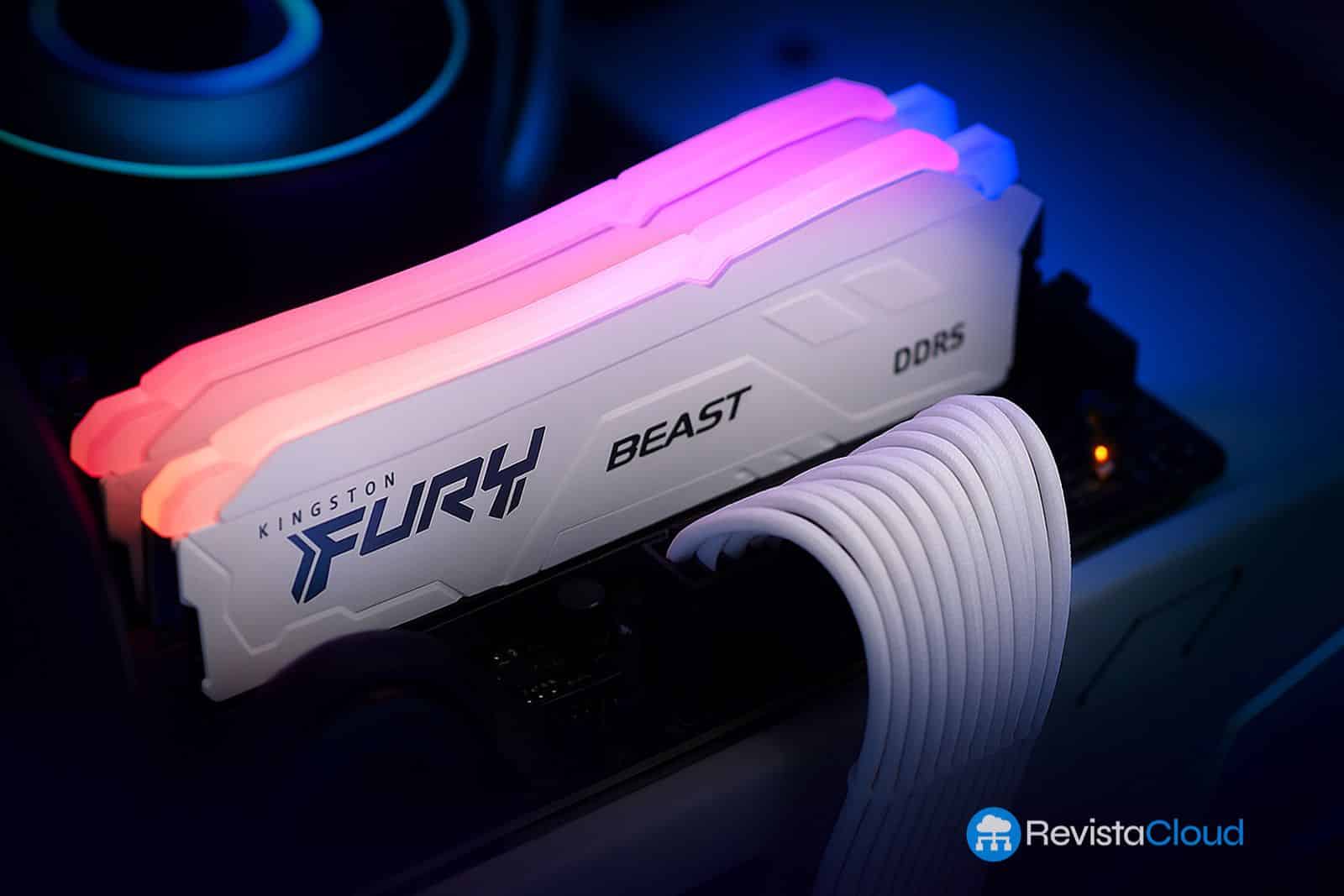With the arrival of processors like Intel Alder Lake and AMD Ryzen 7000, the RAM market has entered a new phase. The transition from DDR4 to DDR5 is now a reality, although both standards will coexist for some time. This evolution involves not only an increase in frequency or capacity but also a series of improvements that directly impact the performance, efficiency, and stability of current systems.
This article compiles the essential aspects that any user, from beginners to hardware enthusiasts, should know about DDR4 and DDR5 modules. From speed and voltage to compatibility and advanced features like error correction, we cover the key points of a transition that will define the next few years for desktop PCs.
What is RAM and why is it so important?
RAM (Random Access Memory) is the place where the operating system and programs temporarily store the data they need to access quickly. Its access speed—measured in nanoseconds—is significantly higher than that of hard drives or even SSDs. Therefore, having enough fast RAM is essential for maintaining a smooth experience in gaming, editing applications, simulations, or development environments.
However, RAM is volatile. This means it loses its contents when the device is turned off. Thus, its function is purely operational, not for permanent storage. In professional settings, there are alternatives like NVDIMM or Intel Optane DC, which preserve data temporarily after a power loss, but these are not intended for the average user.
DDR4 vs DDR5: Key Technical Differences
| Feature | DDR4 | DDR5 |
|---|---|---|
| Year Introduced | 2014 | 2020 (mainstream in 2022-2023) |
| Pin Count (DIMM) | 288 | 288 |
| Prefetch | 8n | 16n |
| JEDEC Frequency | 1,600 – 3,200 MHz | 4,800 – 7,200 MHz |
| Typical Voltage | 1.2 V (up to 1.35 V) | 1.1 V |
| Integrated ECC | No (only in ECC modules) | Yes (On-Die ECC) |
The most visible difference is in speed: DDR5 doubles the theoretical bandwidth compared to DDR4. It also reduces power consumption with a nominal voltage of 1.1 V compared to DDR4’s 1.2 V, resulting in less heat and better efficiency. Another significant innovation is On-Die ECC, an integrated error detection and correction system in the chip, although this does not mean that all DDR5 modules are equivalent to server modules (Registered ECC).
Historical Evolution of DRAM
DRAM memory has gone through several generations since the ’90s:
- EDO-RAM and SDRAM marked the beginning of the DIMM module era.
- DDR (Double Data Rate) revolutionized speed by transferring data on both edges of the clock.
- Subsequent DDR generations—DDR2, DDR3, and DDR4—incrementally increased frequency and reduced voltage.
- Now, DDR5 not only improves performance but also introduces a more modern architecture with dual channels per module and voltage management moved to the module rather than the motherboard.
Compatibility: Can I Use DDR5 on Any Board?
No. DDR4 and DDR5 are not compatible with each other, neither physically (different notches in the socket) nor electrically. Additionally, chipsets and motherboards are designed for one or the other technology. Some platforms, like Intel Alder Lake and Raptor Lake, offer dual support (with boards available for both DDR4 and DDR5), while AMD’s AM5 platform has exclusively adopted DDR5.
When Should I Upgrade to DDR5?
Today, DDR5 is more accessible than at launch, both in price and availability. The initial modules were costly and did not surpass high-end DDR4 in real performance, but this gap has narrowed significantly. If you are building a new system with next-generation processors and plan to keep it for years, opting for DDR5 is now a sensible investment.
On the other hand, if you have a DDR4 platform and your system performs well, there is no urgent need to upgrade just yet. The leap becomes especially relevant in environments requiring high bandwidth, such as content creation, scientific computing, or high-resolution gaming and intensive multitasking.
What About Overclocking and Latency?
DDR5 allows for much higher frequencies but with higher latencies. In other words, although the clock cycles are faster, the time taken to respond to an instruction can be greater. However, the increased bandwidth compensates for this difference in many cases. Additionally, the new generations of DDR5 modules support XMP 3.0 (Intel) and EXPO (AMD) profiles to facilitate automatic overclocking.
The Future of RAM: Beyond DDR5
Alongside DDR5 development, the industry is researching technologies like MRAM (magnetoresistive memory), which promises speed similar to RAM with data persistence, and LPDDR5X, increasingly common in mobile devices. However, for desktop computers and workstations, DDR5 will dominate the market at least for the rest of the decade.
Conclusion
The transition from DDR4 to DDR5 is well underway and is already a viable option for most users building new systems. It represents a significant leap in efficiency, capacity, and speed, although not without challenges in compatibility and price. Choosing the right module requires understanding the technical differences and considering the actual usage needs.
One thing is clear: RAM remains key for smooth performance, and DDR5 is poised to be the new standard for the coming years.
Source: Hardwareluxx

